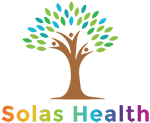
Prescription vs. Illegal Opioids: What's The Difference?
Prescription and illegal opioids are both misused by people and can lead to opioid use disorder. People who are addicted often develop a tolerance to the drug and experience withdrawal symptoms that make it difficult for them to quit using.
Addiction can happen to anyone from any background. Many people who get addicted to prescription opioids start out with a legitimate prescription. They may continue to use and misuse their medication.
Some people who are addicted to prescriptions may switch to street drugs when their prescription is cut off. Of course, some people also start off using street drugs. All opioids are dangerous when it comes to addiction.
Prescription Opioids Versus Street Drugs
Prescriptions are legally prescribed by a licensed healthcare professional to treat pain. They are typically used for moderate to severe pain management after surgery, injury, or for chronic pain conditions.
Oxycontin, Percocet, and codeine are all opioids that are prescribed in modern medicine. These drugs are legal when obtained with a valid prescription from a doctor. They are regulated and monitored by healthcare authorities. However, that hasn’t stopped unethical doctors from finding a way to exploit addicted patients and make a profit off of them.
Illegal opioids are obtained and used without a valid prescription. Purchased on the illegal drug market and not regulated by healthcare professionals, users are frequently buying recreational purposes or to self-medicate for pain relief.
Nowadays, many illegal opioids are sold as one thing but contain another. For example, there are blue pills sold as Oxy when they actually contain fentanyl, a drug that's 50-100 times as potent. This often causes fatal overdoses, especially in infrequent users. Illicit drugs may vary in potency and may be adulterated with fentanyl.
Misuse and Addiction
While prescription opioids can be effective for managing pain when used as directed by a healthcare professional, they also have a potential for misuse and addiction. People may misuse medications by taking higher doses than prescribed, using them without a prescription, or crushing and snorting them to enhance their effects.
Illegal narcotics, such as heroin and illicit fentanyl, are known for their high potential for addiction and overdose. These drugs can be extremely dangerous due to their varying potency and the risk of contaminants.
Other Dangers of Opioids
Prescription opioids can provide pain relief without causing harm. However, misuse can lead to side effects such as respiratory depression, sedation, overdose, and addiction. There are also many lingering effects on health when people misuse drugs regularly, including neurological damage.
Illegal narcotics come with significant health risks, including a higher likelihood of overdose due to their unregulated potency and potential contaminants. Drugs like "tranq dope", combining fentanyl and an animal tranquilizer called xylazine, are a hazard for people who are not typically "hardcore" drug users.
All people with opioid use disorder are in danger of overdose. Many people who use multiple drugs don't realize that certain combinations, such as opioids and benzodiazepine drugs, can be fatal.
Medication-Assisted Treatment
A treatment program specializing in Medication-Assisted Treatment (MAT) can be highly effective in helping people who are addicted to opioids. MAT combines medication with behavioral therapy and counseling to address the physical and psychological aspects of opioid addiction. Here's how a program can help individuals struggling with opioid addiction:
- Reduction of Cravings and Withdrawal Symptoms: Opioid addiction often leads to intense cravings and uncomfortable withdrawal symptoms. MAT allows people to focus on recovery without constant intense physical cravings.
- Normalization of Brain Function: Opioids disrupt normal brain function, leading to changes in reward pathways and mood regulation. MAT medications can help restore normal brain function over time.
- Reduction of Illicit Drug Use: MAT can significantly reduce the use of illicit opioids by providing a safer and more controlled alternative.
- Lowered Risk of Overdose and Death: The risk of overdose and death is dramatically reduced for individuals on MAT. Medications like naloxone, included in some MAT formulations, can reverse opioid overdoses and save lives.
- Engagement in Counseling and Therapy: MAT programs include counseling and therapy as a crucial component. Behavioral therapies help individuals address factors contributing to their addiction, learn coping skills, and develop strategies for relapse prevention.
- Long-Term Recovery Support: MAT programs can provide ongoing support for individuals, helping them stay connected to treatment and maintain their recovery over the long term.
It's important to note that MAT is not a one-size-fits-all approach. Different individuals may respond better to different medications, and the treatment plan should be tailored to each person's needs.
Getting Help for Addiction
If you or somebody you love is addicted to opioids, we're here to help. We offer drug rehab for fentanyl that includes MAT and other treatments to people in North Carolina. Give us a call to learn more about our services.
If you are in need of help, please call us at: 910-295-7246 or message us.
Categories
opioids fentanyl
